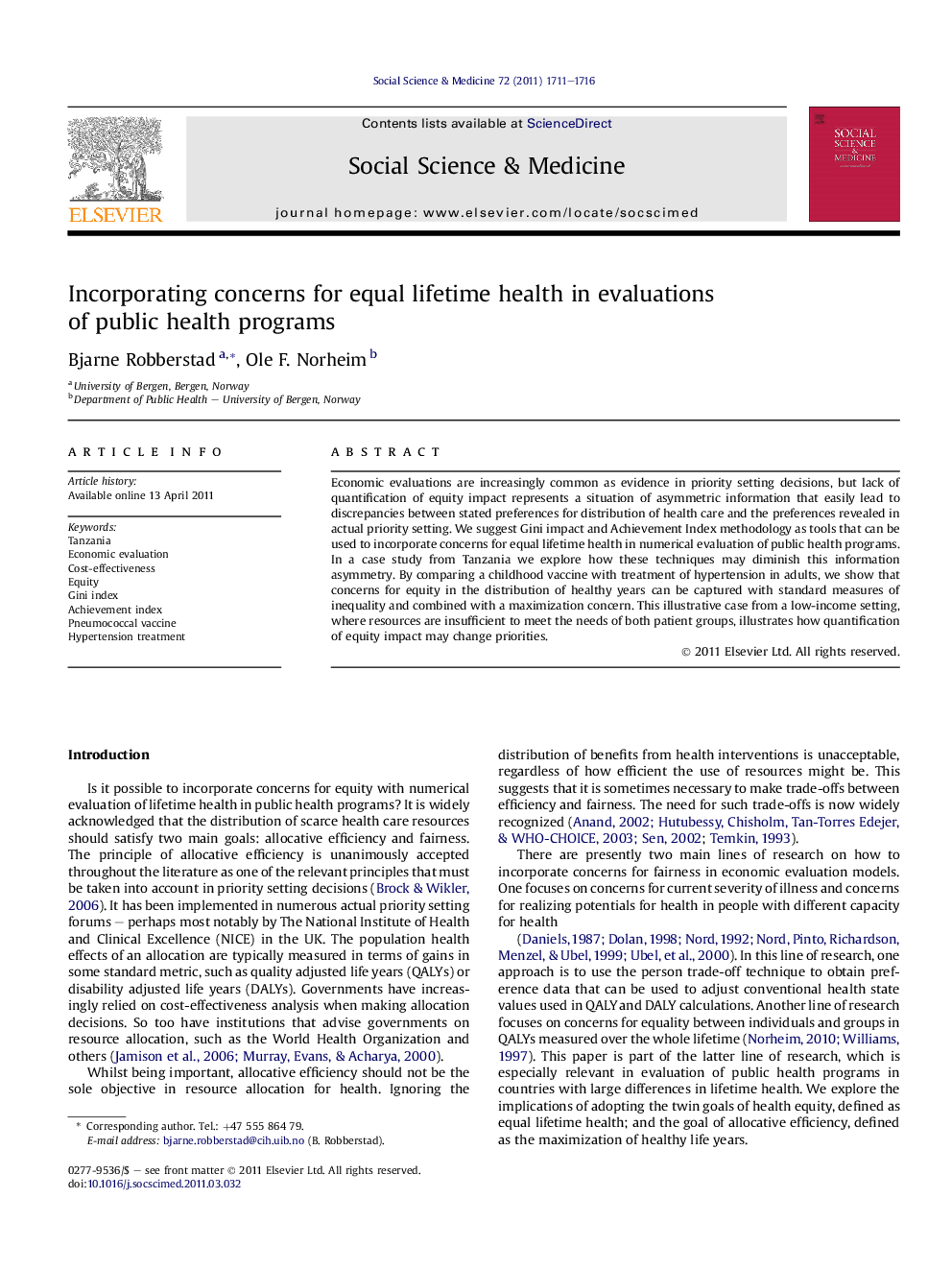| کد مقاله | کد نشریه | سال انتشار | مقاله انگلیسی | نسخه تمام متن |
|---|---|---|---|---|
| 952948 | 927555 | 2011 | 6 صفحه PDF | دانلود رایگان |

Economic evaluations are increasingly common as evidence in priority setting decisions, but lack of quantification of equity impact represents a situation of asymmetric information that easily lead to discrepancies between stated preferences for distribution of health care and the preferences revealed in actual priority setting. We suggest Gini impact and Achievement Index methodology as tools that can be used to incorporate concerns for equal lifetime health in numerical evaluation of public health programs. In a case study from Tanzania we explore how these techniques may diminish this information asymmetry. By comparing a childhood vaccine with treatment of hypertension in adults, we show that concerns for equity in the distribution of healthy years can be captured with standard measures of inequality and combined with a maximization concern. This illustrative case from a low-income setting, where resources are insufficient to meet the needs of both patient groups, illustrates how quantification of equity impact may change priorities.
► Asymmetric information between equity and efficiency impact is common in evaluations of public health programs.
► Gini impact and Achievement Index methodology can incorporate concerns for equal lifetime health in numerical evaluation.
► A policy relevant example from Tanzania illustrates how quantification of equity impact may change priorities.
Journal: Social Science & Medicine - Volume 72, Issue 10, May 2011, Pages 1711–1716